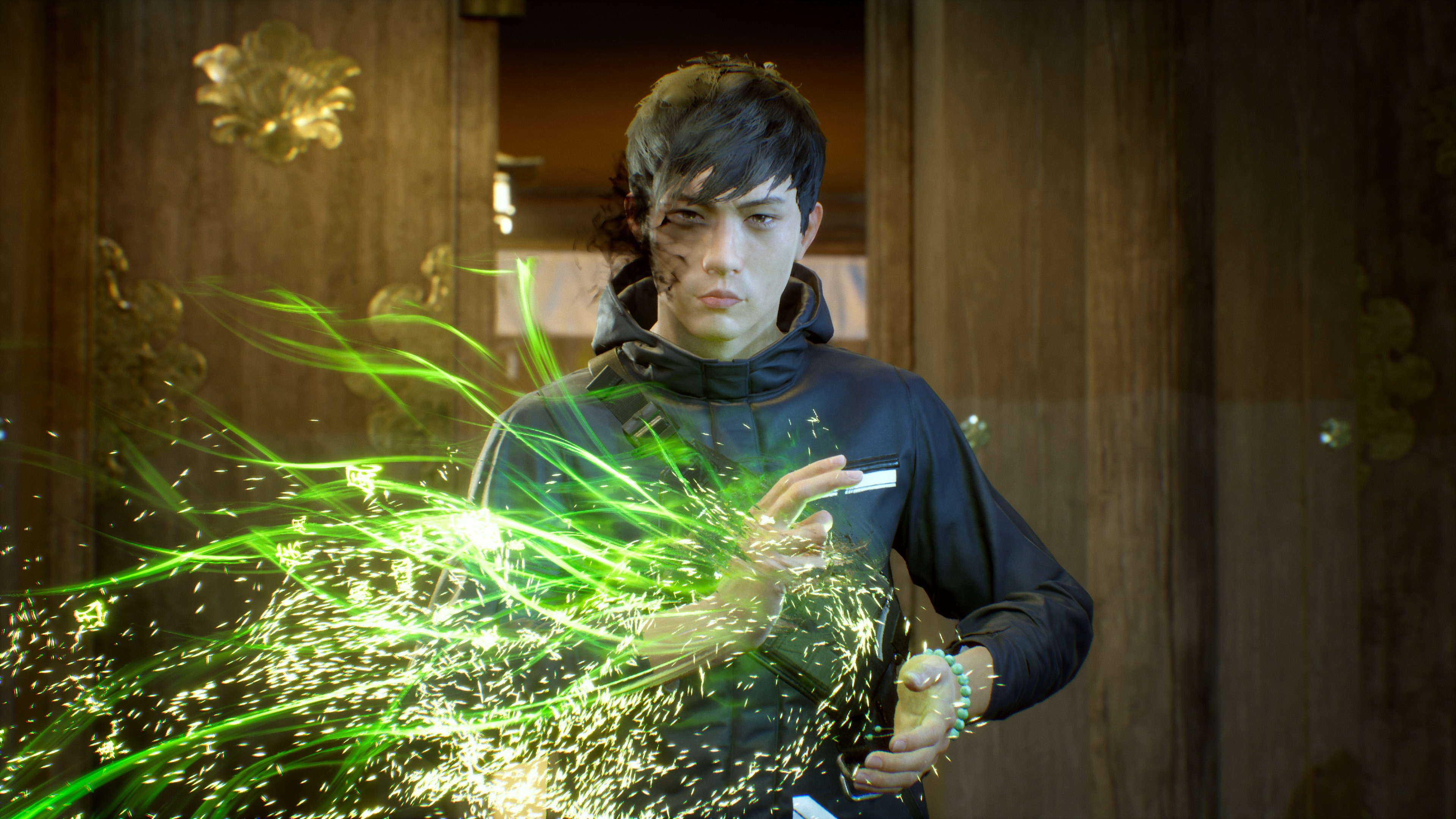Tom's Guide Verdict
Ghostwire: Tokyo offers a varied arsenal of paranormal powers, and a well-realized deception of the Japanese capital. However, it does fall into some familiar open-world grooves.
Pros
- +
Beautiful open-world
- +
Engaging side missions
- +
Eerie atmosphere
- +
Flashy combat
Cons
- -
Lackluster story
- -
Underwhelming upgrades
Why you can trust Tom's Guide
Platforms: PC, PS5 (reviewed)
Price: $60
Release date: March 25, 2022
Genre: Action/adventure
Ghostwire: Tokyo is a fairly radical departure from developer Tango Gameworks' previous two titles. While the studio cut its teeth on two brilliant survival-horror games, The Evil Within and its sequel, Ghostwire: Tokyo is an almost entirely different beast.
For starters, the perspective has switched from third-person to first, and while Ghostwire: Tokyo is enjoyably spooky, it’s by no means a horror game. Perhaps the biggest directional change, though, is that Ghostwire: Tokyo consistently empowers you. From the start, players are given access to a whole arsenal of paranormal abilities to play with.
Set within a gorgeous recreation of the Japanese capital, Ghostwire: Tokyo feels refreshingly compact in scope. This year has already seen a glut of open-world titles. The likes of Dying Light 2: Stay Human, Horizon: Forbidden West and Elden Ring all demand players commit dozens of hours to see everything, but Ghostwire: Tokyo is less intimidating in scale.
There’s an awful lot to like about Ghostwire: Tokyo, and while it does stumble in some key areas, the overall package is one that’s easy to recommend — especially to those players looking for an experience that won’t require months of effort. Read on for our full Ghostwire: Tokyo review.
Ghostwire: Tokyo review: Story
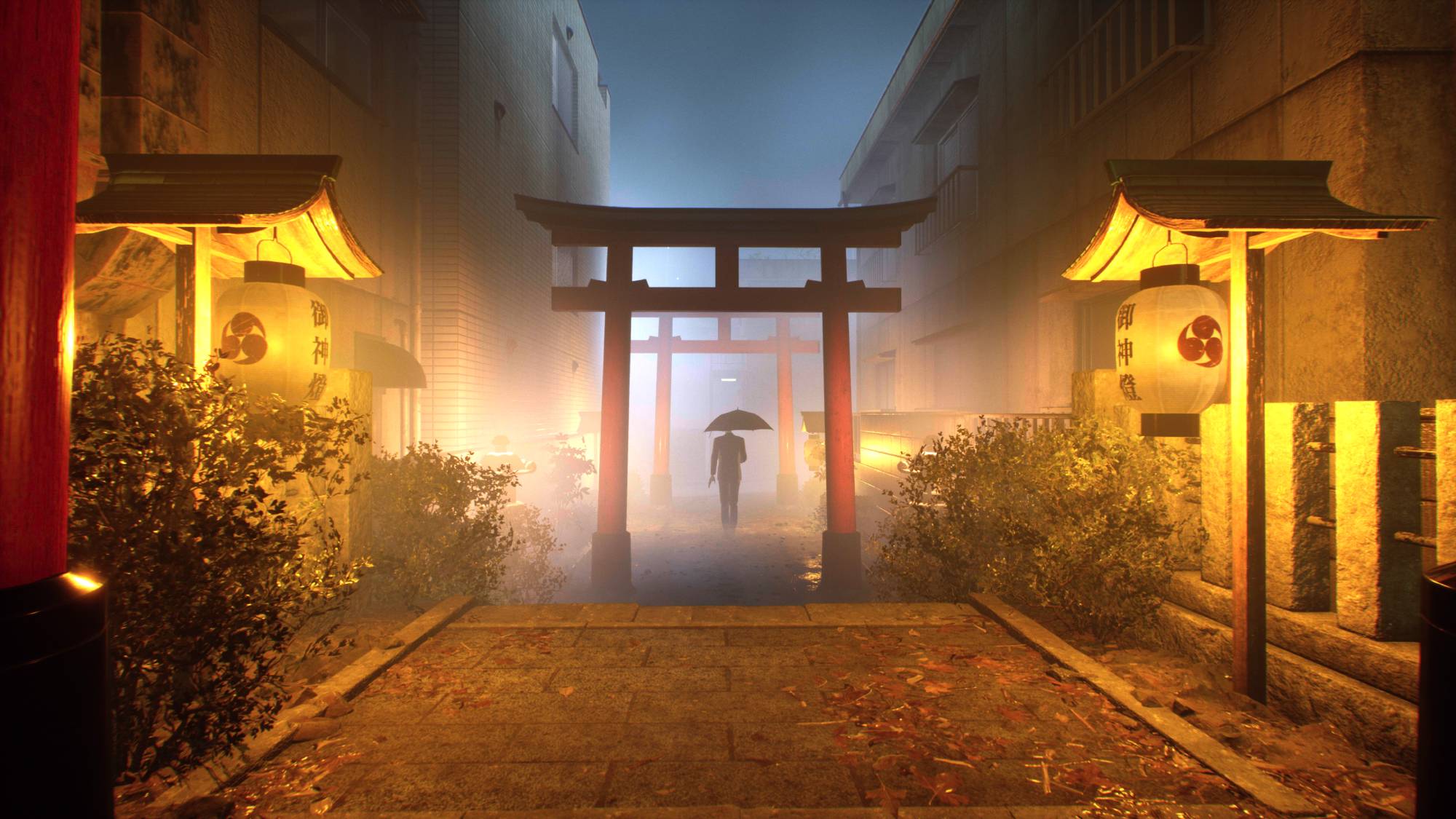
Ghostwire: Tokyo throws you straight into the thick of things. The breakneck pacing of the game’s opening cutscene is almost jarring. However, it does a serviceable job of setting up the stakes. The citizens of Tokyo have mysteriously vanished and the city is being overrun with sinister spirits. To make matters worse the city has been blanketed in thick, very deadly, fog.
As Akito, a man possessed by the spirit of a former police officer known as KK, you must set out on a journey to unravel the mystery behind these strange paranormal events. You’re also trying to locate a shady group wearing traditional Hannya masks who appear to be up to no good, and could be connected to the proceedings.
There are also personal stakes to the story, as Akito’s sister is wrapped up in the events. Plus, KK’s backstory is more complicated than he first lets on. However, none of these mysteries feel all that compelling. It's perhaps in large part because Akito seems so unfazed by the spooky occurrences in his home city; if the game's protagonist can’t even muster the energy to seem interested, why should you?

The interplay between Akito and KK (who share the former’s body, and are in regular communication) is also fairly wooden. They quickly form a sort of buddy-cop dynamic, but neither character is all that compelling and it’s hard to buy into their personal arcs.
The game’s narrative also concludes surprisingly quickly. Just as I felt the story was starting to build towards something slightly more interesting, I was informed I was about to reach a point of no return, so needed to wrap up any outstanding side quests before venturing further.
Ghostwire: Tokyo review: Gameplay
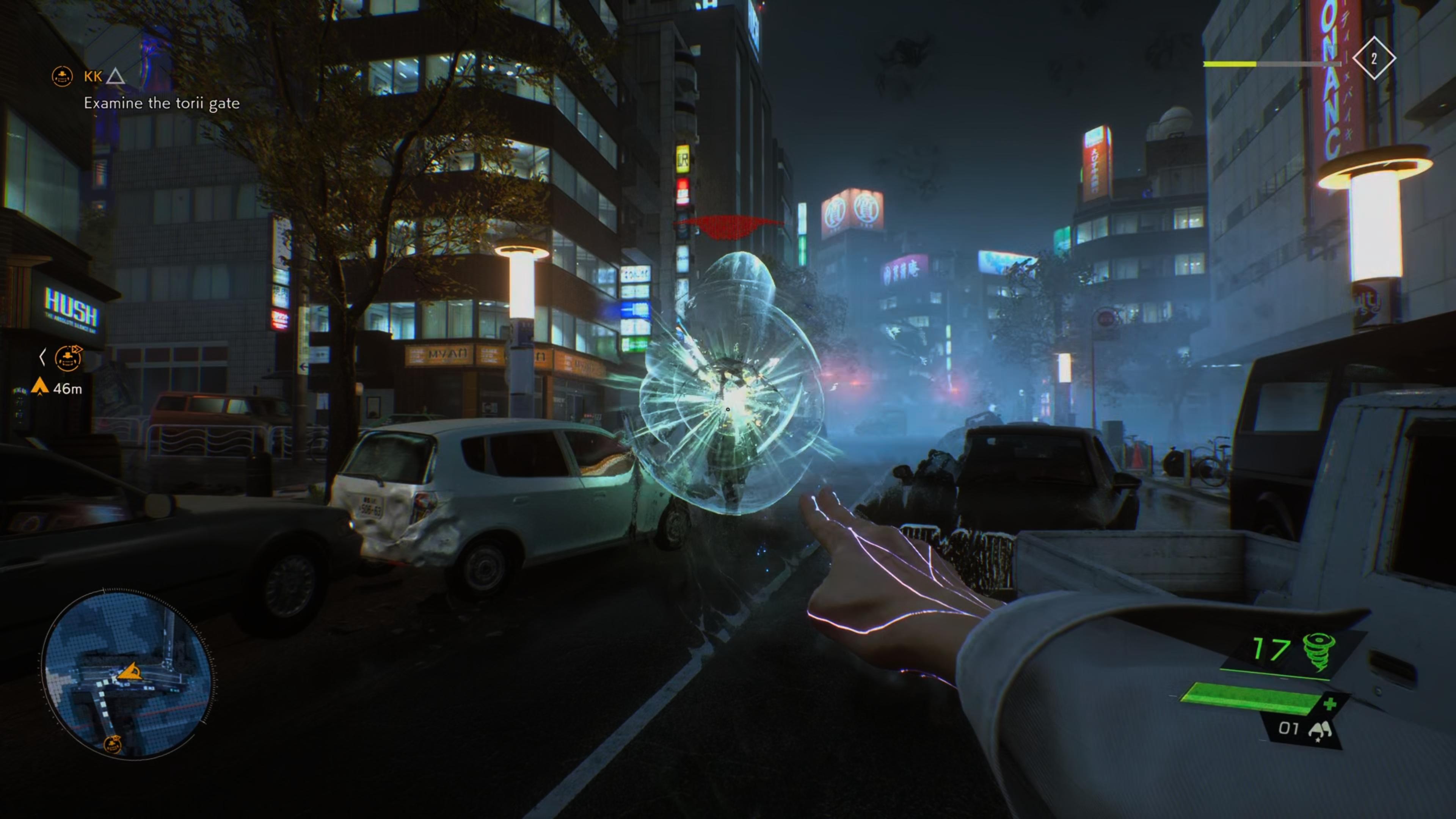
Akito's main weapon against his foes is the ability to wield elemental spells with a single button press; you can shoot wind, fire and ice from your fingertips, while holding the cast button will perform a more powerful attack that can do some serious damage.
The “karate meets magic” combat is flashy, but surprisingly simplistic, and your arsenal barely evolves over the course of the game. You unlock all your elemental powers within the first hour or so, which makes enemy encounters feel a tad repetitive towards the end of the main campaign. However, casting spells feels novel enough that the combat just about holds your attention throughout.
The enemies you’re up against are sinister invading spirits known as Visitors. These foes can be quite aggressive, and while Ghostwire: Tokyo is by no means challenging in the Elden Rings sense, enemies can overwhelm you in numbers. Playing smart and keeping your distance is key to coming out of battles in one piece. A stealthy approach is also viable, but being sneaky isn’t especially enjoyable, thanks to enemy detection AI that is easy to exploit.
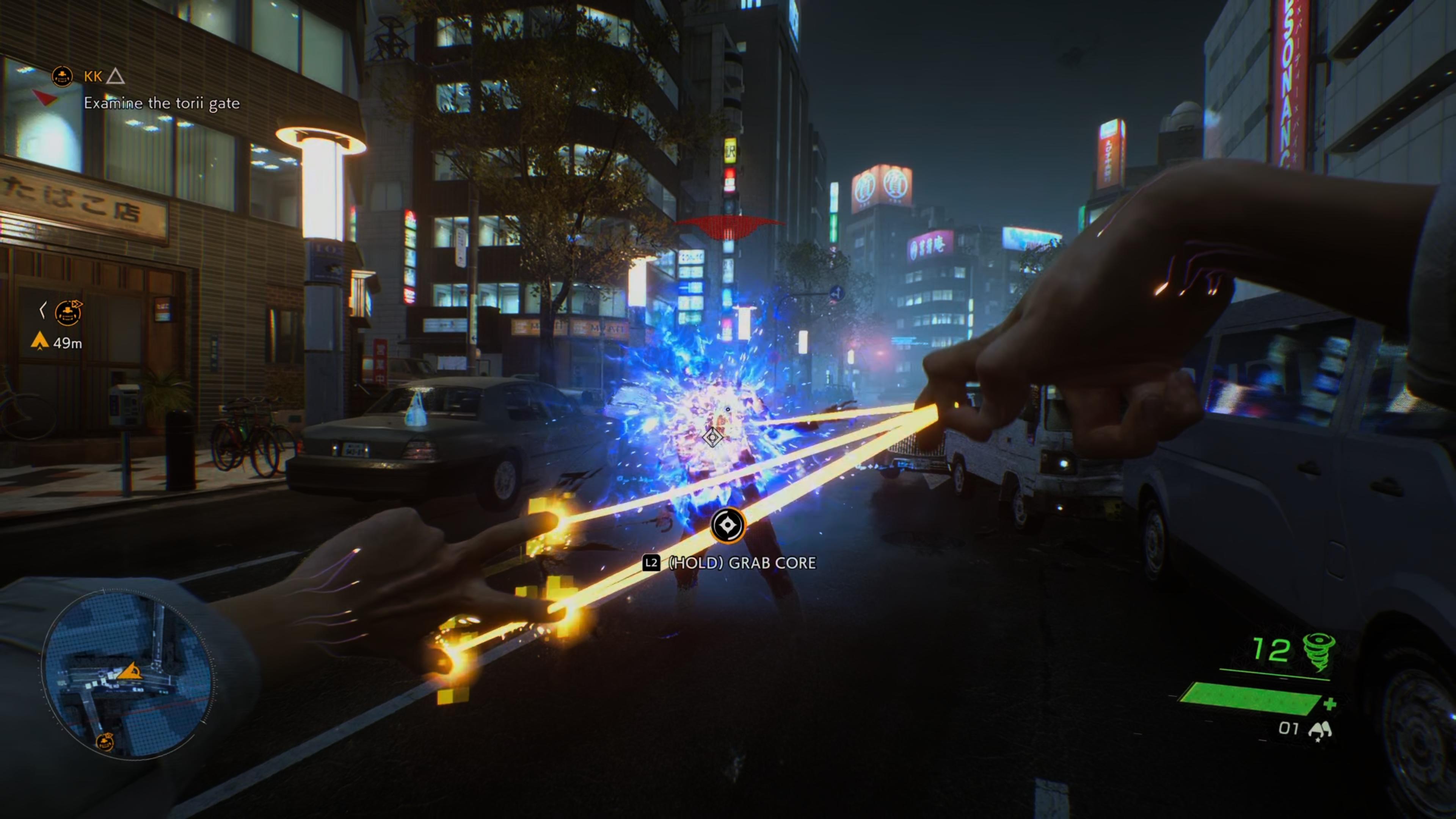
Another key pillar of combat is the ability to rip an enemy’s core out of their body, although only once you’ve softened them up a bit. There’s no variety in how this sequence plays out each time, but it always feels highly satisfying, thanks in large part to the DualSense controller’s haptic feedback adding to the immersion.
When you’re not battling spectral spirits, you’re free to explore the game’s scaled-back depiction of Tokyo. That's highly recommended, because the setting is the game’s true star, offering you a densely packed location that is a joy to aimlessly wander around. For narrative reasons, the city is entirely devoid of other humans, which creates a wonderfully eerie atmosphere. After a short prologue, you are given the freedom to tour Tokyo as you see fit and there’s plenty to keep you occupied.
Within minutes, your map will be overflowing with icons and points of interest begging to be explored. Some of these distractions definitely feel like the standard open-world fluff you’ve probably experienced in countless other games. For example, you'll spend a lot of time cleansing gates to defog the map and absorbing lost spirits, which can be exchanged for XP/currency; both activities feel like exercises in checking a box.
However, the game’s numerous side missions shine. Throughout the world you’ll find lost souls with unfinished business who ask for your assistance. These additional missions don’t try to compete for your attention with the main campaign but instead offer satisfying bite-sized adventures. Some of these can be completed in less than five minutes, and even the longest one I encountered didn’t take more than 20.
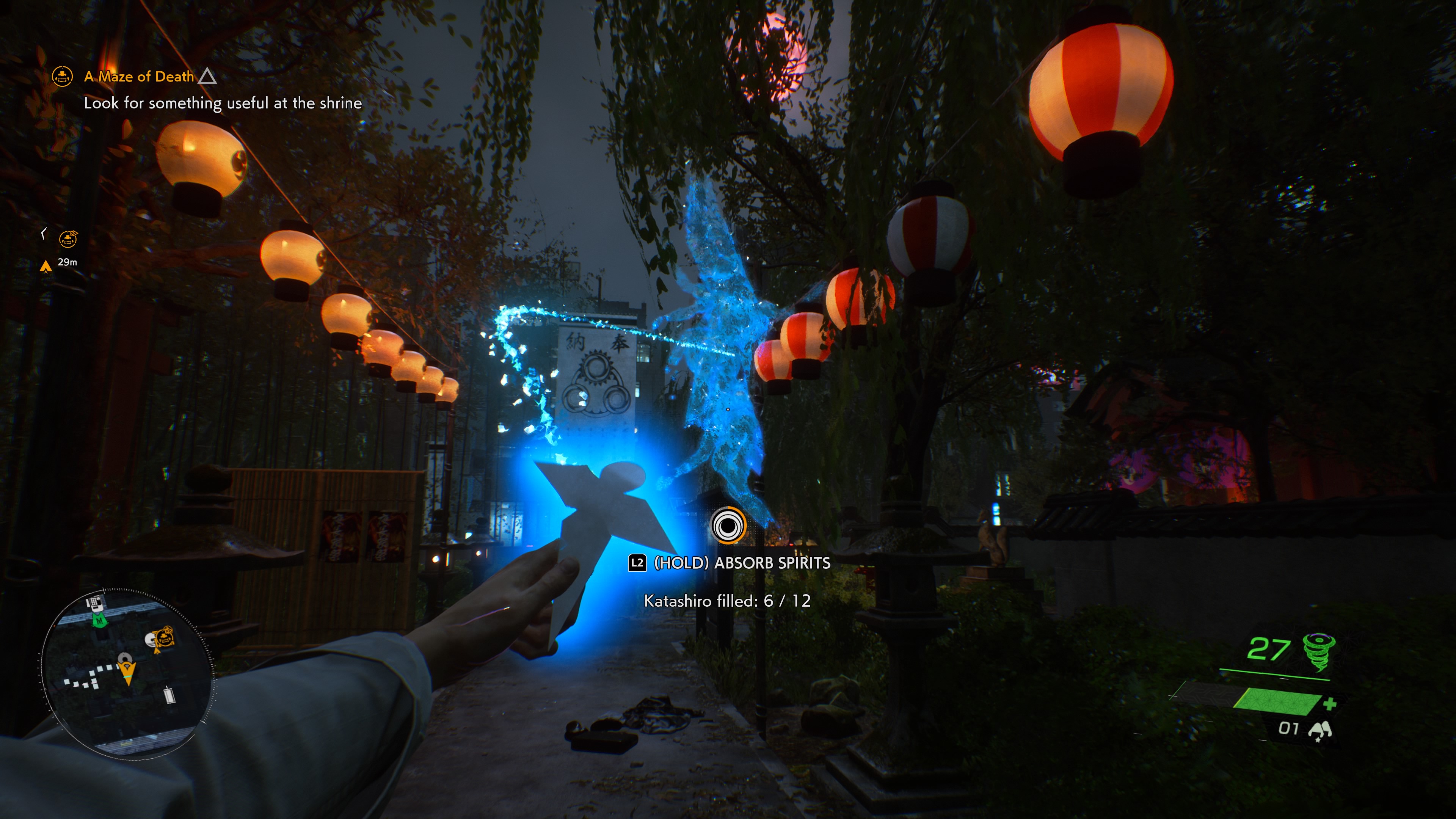
The most mundane of these jobs involve fighting a pack of standard enemies, but some tell genuinely touching stories. The best ones cast you as a paranormal investigator and ask you to comb through intricately detailed environments for hidden secrets. Because of their brevity, side quests work as a great palette cleanser when you want a temporary break from the main story.
It’s a shame that the rewards for thoroughly exploring and completing side quests aren’t more substantial. Ghostwire: Tokyo does have a reasonably large upgrade tree but the vast majority of new skills are just minor stat boosts with no tangible impact on gameplay. There are no new powers or abilities to unlock, which feels like a missed opportunity. Instead you’ll spend your XP on upgrades that are technically useful but hardly noticeable. For example, one unlockable skill makes charging up a fireball a fraction of a second quicker.
In a sea of open-world games seemingly competing to offer the longest completion time possible, Ghostwire: Tokyo’s compactness feels refreshing. The main story can be blasted through in less than 15 hours, and even with plenty of optional activities undertaken you’ll reach the end within 30 hours.
If you’re looking for an open-world game that doesn’t totally overwhelm you with more content than you could dream of completing, Ghostwire: Tokyo fits the bill nicely.
Ghostwire: Tokyo review: Visuals and DualSense features
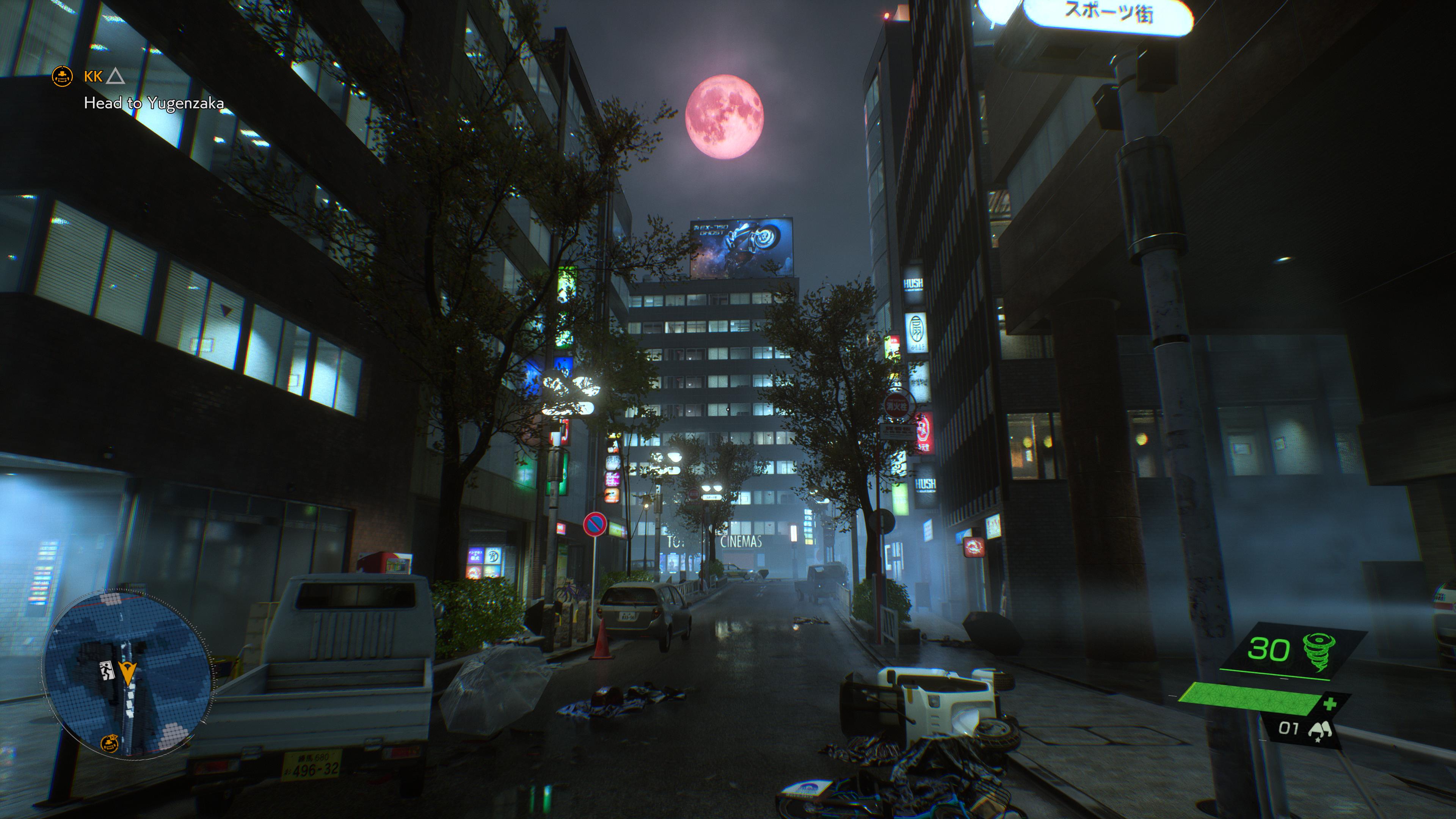
Ghostwire: Tokyo is another impressive showcase for the graphical power of the PS5. The city streets of Tokyo look almost photorealistic under the correct lighting, and defeated enemies explode into a shower of sparks — an effect that still wowed me even after a dozen hours.
I was also impressed with how finely polished everything was. I didn’t run into a single technical issue of note, and only encountered a handful of minor bugs. Even with smaller open-world games you typically have to make allowances for some technical shortcomings, but in my experience Ghostwire: Tokyo is a rare exception.
The implementation of the many features of the PS5 DualSense controller is another highlight. The adaptive triggers make spell casting feel like a genuine effort, and the haptic feedback makes ripping out an enemy’s core feel satisfying every single time. It’s no exaggeration to say playing Ghostwire: Tokyo on an alternative controller would be doing the game a disservice.
Ghostwire: Tokyo review: Verdict
While Ghostwire: Tokyo is disappointingly unremarkable in the story department, its recreation of Tokyo begs to be explored and its slick combat remains consistently cinematic throughout. Its collection of gameplay mechanics and system are far from innovative, but everything blends together to create a cohesive package that is regularly greater than the sum of its parts.
PlayStation gamers have already been treated to several heavy-hitters in 2022. While Horizon: Forbidden West and Gran Turismo 7 have hogged the spotlight, Ghostwire: Tokyo should not be overlooked. It might not quite stand up against the greatest exclusives that have already graced Sony’s next-gen console, but Ghostwire: Tokyo is another PS5 must-play.

Rory is an Entertainment Editor at Tom’s Guide based in the UK. He covers a wide range of topics but with a particular focus on gaming and streaming. When he’s not reviewing the latest games, searching for hidden gems on Netflix, or writing hot takes on new gaming hardware, TV shows and movies, he can be found attending music festivals and getting far too emotionally invested in his favorite football team.
